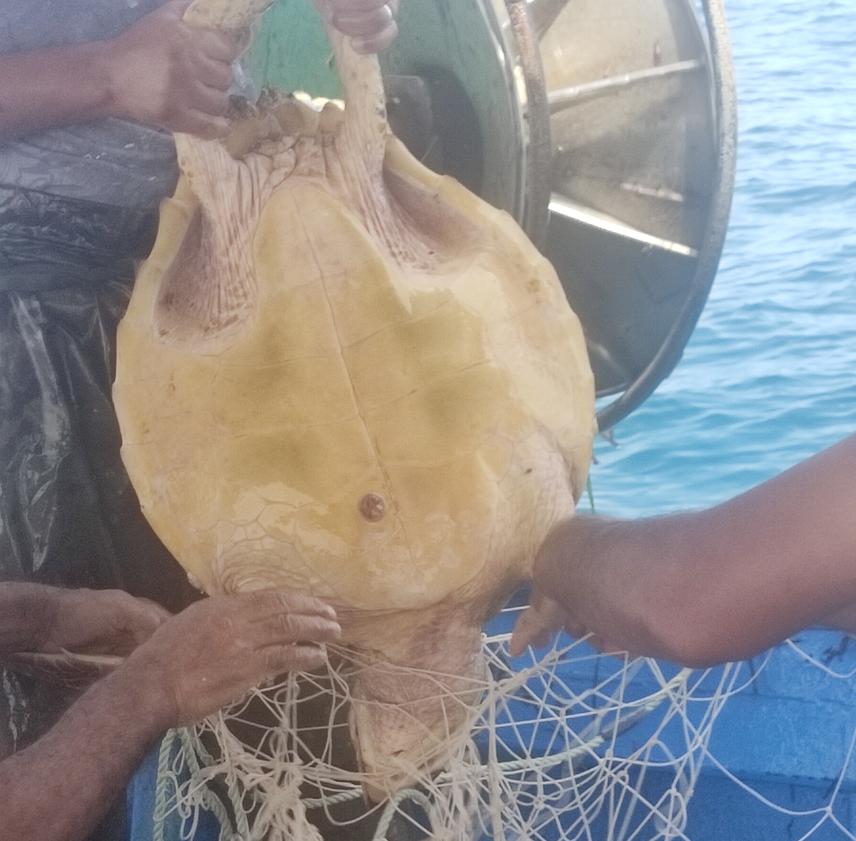Khaled Chouikhi
Sea turtles spend the majority of their life in the sea, during which time they are subject to many threats, such as incidental capture. Most studies on the bycatch of these species have focused on commercial fisheries, i.e., longlines and trawls. However, the gillnet fishery is another fishery widely distributed in the Mediterranean. This study analyses parameters related to the bycatch of loggerhead turtles in coastal gillnets in the island of Djerba, to seek to highlight the importance of this area for Caretta caretta in the Mediterranean context and to stress the conservation implications in this area.

The incidental catch of vulnerable species by fishing gears (also known generically as “bycatch”) is a key conservation issue in the Mediterranean for several vertebrates, including sea turtles. Typically, data on incidental catches of those species has been collected in a haphazard manner, using different protocols, sometimes at local scales, and in ways that make comparison between studies difficult. Sea turtles and more particularly the loggerhead Caretta caretta, the most common in the Mediterranean, interact with many fishing gears in many countries. The impact of bycatch on populations of these reptiles is currently one of the most pressing issues to be addressed to ensure their survival around the world.
In the Mediterranean, fishing activity is considered the most important factor of known anthropogenic mortality acting on the populations of these species. Sea turtles are long-lived species during which they go through two main ecological phases: an early pelagic phase followed by another benthic phase. The available knowledge on the dynamics of sea turtle populations shows that mature individuals contribute more to the demographic growth of the population. This means that the activities of protection of eggs and nests, undertaken on several known nesting sites in the Mediterranean, remain insufficient without protection of adults by reducing mortality especially by fishing. The conservation of these reptiles at sea therefore requires an identification of the structure of the Mediterranean stock of marine turtles, an estimation of incidental captures and related mortality and the development of a demographic model for the Mediterranean population.
In this study, we contribute to the evaluation of the effect of fishing with gillnets on the population of marine turtles in the Gulf of Gabès, an area presumed as a feeding and wintering area for sea turtles in the Mediterranean where artisanal fishing is highly developed and involves large catches of loggerheads. The main goal of this work is the estimation of catch rates, total catch and catch mortality and the determination of other parameters related to gillnet fishing such as catch period, time of catch, catch area of capture and size of turtles captured.